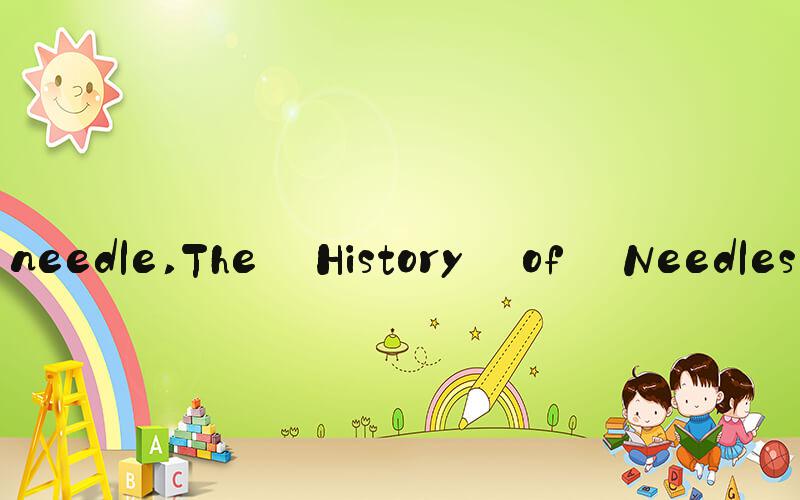AI答案
 What is a Needle?
What is a Needle?A needle is a thin, pointed tool typically made of metal or plastic that is used for a variety of purposes. The most common use of a needle is for sewing, either by hand or with a machine. Needles come in different sizes and have different shapes and points depending on their intended use. Some needles are curved and others are straight, while some have sharp points and others have blunt ends.
The History of NeedlesThe use of needles dates back to prehistoric times when they were made of materials such as bone, animal teeth, and thorns. These early needles were used for a variety of purposes, including sewing hides together to create clothing and shelter. With the onset of the Bronze Age, needles were made of metal for the first time. In ancient Rome, needles were also used for medical purposes, such as acupuncture.
The Many Uses of NeedlesWhile needles are most commonly associated with sewing, they have a wide range of other uses. In medicine, needles are used for administering medication or drawing blood. In acupuncture, tiny needles are inserted into specific points on the body to relieve pain and promote healing. Needles are also used in tattooing and piercings.
Outside of these more common uses, needles can also be used in scientific experiments to collect small samples, such as individual cells. In fact, some needles are so small that they are barely visible to the naked eye, making them ideal for working with tiny samples.
The Dangers of Needle UseWhile needles have many practical uses, they also come with risks. Needlestick injuries, where the needle accidentally punctures the skin of the user or another person, can lead to the spread of infectious diseases such as HIV and hepatitis. Proper precautions must be taken when needles are used, including proper disposal and the use of protective equipment such as gloves and masks.
There is also the issue of needle use for recreational purposes, such as intravenous drug use. This type of needle use poses serious risks to the user, including the spread of disease and the possibility of overdose.
The Future of NeedlesThe use of needles continues to evolve as technology advances. For example, researchers are exploring the use of microneedles, which are small enough to penetrate the skin without causing pain or discomfort. Microneedles have a wide range of potential applications, including drug delivery and cosmetic treatments.
There is also the development of needle-free alternatives, such as inhalers and transdermal patches, that eliminate the need for injections altogether. While needles will likely remain an important tool for many purposes, the medical and scientific communities are exploring new and innovative ways to reduce their use and improve patient comfort.
ConclusionNeedles have been a part of human history for thousands of years, serving a wide range of purposes. While they come with risks, they also offer many practical applications, from sewing and medical procedures to scientific experiments. As technology advances, the use of needles will continue to evolve, with the potential for new and innovative applications that improve patient comfort and safety.
